Madlener House
4 West Burton Place
Chicago, Illinois 60610
Telephone: 312.787.4071
[email protected]
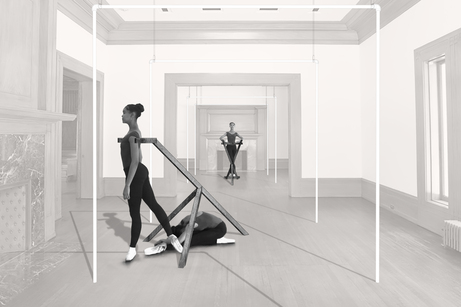
View of "Brendan Fernandes: The Master and Form," in development, 2017, Graham Foundation, Chicago. dancer: Leah Upchurch, photo and rendering: Norman Kelley
Please join us for a opening performance and reception with Brendan Fernandes, Norman Kelley, and dancers from the Joffrey Academy of Dance on January 25, 2018 from 6–8:00 p.m.
For more information on the exhibition, Brendan Fernandes: The Master and Form Installation in collaboration with Norman Kelley, click here.
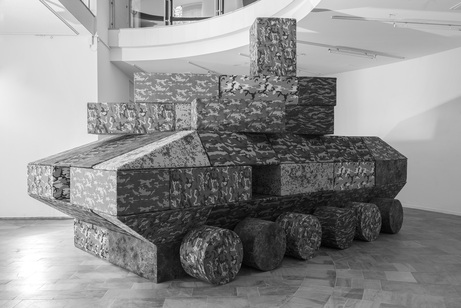
Andreas Angelidakis, Polemos, 2016.
|
Please join us for a talk by Jaffer Kolb, guest editor of Graham funded Log 41, which includes a special section called "Working Queer" with contributions by Ellie Abrons, Andreas Angelidakis, Annie Barrett, Caitlin Blanchfield & Farzin Lotfi-Jam, Stratton Coffman, Mustafa Faruki, Nicholas Gamso, Andrew Holder, Andrés Jaque, Jaffer Kolb & Aaron Betsky, Ang Li, Michael Meredith, Ivan L. Munuera, Joel Sanders, Rosalyne Shieh, and Michael Wang. In the discipline of architecture, "queerness" has been understood primarily in terms of how it relates to space—from bathrooms to locker rooms; spatial transgressions to phenomenal strategies of "seeing.” But what if we understood the term less as what we design and more how. That is, to think of queerness as a methodology: a way of working, an approach to research, a framework for dealing with history. In this formulation, space opens up to a range of new kinds of practices that work across scales (from building to artifact), across media (from material assembly to performance), and across forms. Together, tactics of queerness such as humor, subversion, caricature, exaggeration, and others, can be used to disorient objects themselves: to see them anew, to give them new context, to understand how they perform as socio-cultural representations. This talk will look at a few disoriented objects as a means of unpacking the potential of this queer project—to test the theory and determine whether we can affect our tools with a renewed sense of critical action. Jaffer Kolb is a designer based in New York and co-founder of the architectural practice N/A. He sometimes writes, sometimes curates, and often teaches (currently at Pratt Institute, and most recently at Princeton University's School of Architecture). He was the 2015 Muschenheim Fellow at the University of Michigan, and before that worked as a designer in New York, Chicago, and Los Angeles. His work has appeared in numerous exhibitions and has been published internationally. Previously he worked on the 13th Venice Architecture Biennial under David Chipperfield, and before that served as the US Editor of the Architectural Review. As a design journalist and critic, he has written for numerous publications internationally. He holds a Master of Architecture from Princeton University, a Master’s in Urban Planning from the London School of Economics, and his Bachelor of Arts in Film Studies from Wesleyan University. This talk is presented in relationship to our concurrent exhibition, Brendan Fernandes: The Master and Form, for more information click here. |
Image: Andreas Angelidakis, Polemos, 2017, foam and vinyl seating modules, installation view, Fridericianum, Kassel, documenta 14, photo: Nils Klinger
For more information on the exhibition, Brendan Fernandes: The Master and Form Installation in collaboration with Norman Kelley, click here.
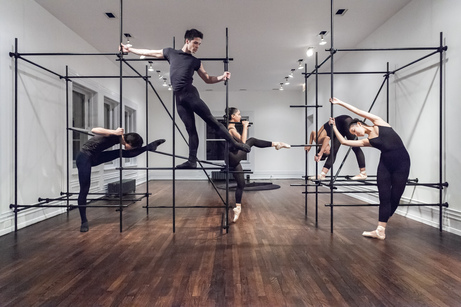
View of "Brendan Fernandes: The Master and Form." 2018, Graham Foundation, Chicago. Design: Norman Kelley; dancers: Satoru Iwasaki, Yuha Kamoto, Andrea de León Rivera, Antonio Mannino, Leah Upchurch; photo: RCH
Please join us for a performance featuring dancers from the Joffrey Academy of Dance followed by a conversation between Brendan Fernandes and Zachary Whittenburg.
Brendan Fernandes is a Chicago-based Canadian artist of Kenyan and Indian descent. He completed the Independent Study Program of the Whitney Museum of American Art (2007) and earned his MFA from the University of Western Ontario (2005) and his BFA from York University in Canada (2002). Fernandes has exhibited widely domestically and abroad, including exhibitions at the Solomon R. Guggenheim Museum, New York; Museum of Modern Art, New York; Museum of Art and Design, New York; Musée d'art contemporain de Montréal; The National Gallery of Canada, Ontario; The Brooklyn Museum, New York; The Studio Museum in Harlem, New York; Mass MoCA, North Adams, MA: The Andy Warhol Museum, Pittsburgh, PA; Deutsche Guggenheim, Berlin; Bergen Kunsthall, Norway; Stedelijk Museum, Amsterdam; The Sculpture Center, New York; The Quebec City Biennial; and the Third Guangzhou Triennial in China. His recent monograph Still Move, was published by Black Dog Press, London, fall 2016. He is currently artist-in-residence and faculty at Northwestern University in the Department of Art Theory and Practice, and is represented by Monique Meloche Gallery, Chicago.
Colorado native Zachary Whittenburg spent ten years as a professional dancer with companies including Hubbard Street Dance Chicago, BJM Danse Montréal, Pacific Northwest Ballet, and Charlotte Ballet. Since then, he has collaborated with Lucky Plush Productions, Same Planet Performance Project, and Molly Shanahan / Mad Shak on performance and choreographic work; and has lectured and led workshops nationally and internationally. From 2009-12 he was the dance editor at Time Out Chicago and has written for numerous print and online publications including regular contributions to Dance Magazine. Formerly the associate director of marketing and communication at Hubbard Street Dance Company, he currently serves as the communications and engagement director at Arts Alliance Illinois. Whittenburg remains engaged with dance as a founding member of the executive committee for the Chicago Dance History Project, and serves on the artistic advisory council for High Concept Labs.
The Joffrey Academy of Dance, Official School of The Joffrey Ballet, is committed to providing students of all ages, levels and backgrounds who have a desire to dance with a world-class education built on a foundation of classical ballet. With the talents cultivated at the Joffrey Academy, students can pursue careers as professional dancers at companies throughout the world, higher education opportunities in dance, or success in other fields. Through the Joffrey Academy’s programs, students develop a diverse set of skills including artistry, creativity, discipline and confidence, among others. The Joffrey Academy’s high-quality, educational programming forms future audiences and support for the Joffrey and builds the organization’s reputation worldwide.
Image: View of "Brendan Fernandes: The Master and Form." 2018, Graham Foundation, Chicago. Design: Norman Kelley; dancers: Satoru Iwasaki, Yuha Kamoto, Andrea de León Rivera, Antonio Mannino, Leah Upchurch; photo: RCH
For more information on the exhibition, Brendan Fernandes: The Master and Form Installation in collaboration with Norman Kelley, click here.
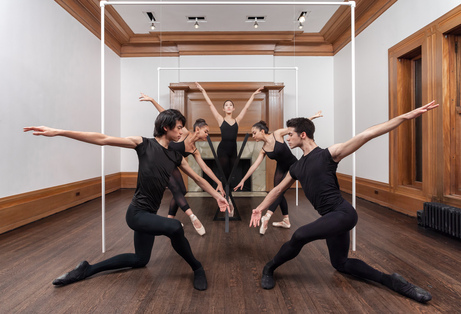
Please join us as curator Hendrik Folkerts reflects on architecture, object, and body in the work of Brendan Ferndandes in a new talk prepared in response to our current exhibition The Master and Form. The talk will be followed by a Q&A and conversation between Folkerts and Fernandes.
Hendrik Folkerts is the Dittmer Curator of Modern and Contemporary Art at the Art Institute of Chicago and one of the curators of documenta 14, which took place in Kassel and Athens in 2017. He studied Art History at the University of Amsterdam, specializing in contemporary art and theory, feminist practices, and performance. From 2010 until 2015 he was curator of Performance, Film & Discursive Programs at the Stedelijk Museum in Amsterdam. Prior to this, Folkerts was coordinator of the Curatorial Program at De Appel arts centre in Amsterdam from 2009 until 2011. He frequently publishes in journals and magazines such as South as a State of Mind, Mousse Magazine, Artforum, The Exhibitionist, Metropolis M, The Journal for Art and Public Space, Afterall Online, as well as monographs and exhibition catalogues. Folkerts is co-editor of Shadowfiles: Curatorial Education (Amsterdam: de Appel arts centre, 2013) with Ann Demeester; and Facing Forward: Art & Theory from a Future Perspective (Amsterdam: AUP, 2015) with Christoph Lindner and Margriet Schavemaker. He is one of the founding editors of the peer-reviewed journal Stedelijk Studies.
Image: View of "Brendan Fernandes: The Master and Form." 2018, Graham Foundation, Chicago. Design: Norman Kelley; dancers: Satoru Iwasaki, Yuha Kamoto, Andrea de León Rivera, Antonio Mannino, Leah Upchurch; photo: RCH
For more information on the exhibition, Brendan Fernandes: The Master and Form Installation in collaboration with Norman Kelley, click here.
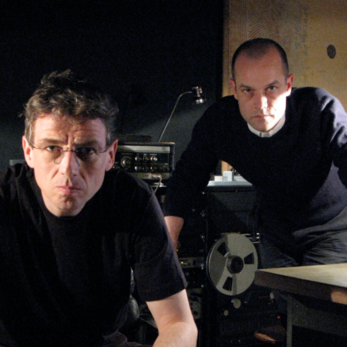
Thomas Lehn and Marcus Schmickler have worked together since 1998. In their long musical collaboration, they confront intrinsically different instruments—for Thomas, the modular synthesizer, and for Marcus, the computer—with a common understanding of real-time composition and a shared admiration for subtle degrees of musical intensity.
Here, the analog-digital duo premieres Prediction Control Allocation—a three-part improvisation and a new performance strategy, with each section exploring a different musical form. Lehn and Schmickler take their cue from Point Line Cloud by composer and researcher Curtis Roads, while referencing the formal ideas of Stockhausen, Xenakis and Ligeti. Sounds scatter, fuse and then mutate, as they flow into other sounds.
Thomas Lehn (b.1958, Fröndenberg, Germany) has been working as a performer, interpreter, composer, and improviser of contemporary music since the early 1980s. Rooted in the experience of a wide spectrum of musical fields and based on his background as a pianist, he has developed an individual "language" of electronic music. The electronic equipment he uses consists of analog synthesizers from the late 1960s, particularly the EMS Synthi A. The specific character of this modular instrument allows him to act and react spontaneously in close contact with the various structural degrees of the musical process.
Marcus Schmickler (b.1968, Cologne, Germany) studied composition and electronic music and works in both composed and improvised forms. He has won numerous prizes and honors and is closely associated with the Cologne label a-Musik. As a composer along with his many works of electronic music, he works with the ensemble recherche, the Staatskapelle Weimar, the musikFabrik, the Paragon Ensemble, the Ensemble Zeitkratzer, among others. As a musician he works with artists such as John Tilbury, Thomas Lehn, MIMEO and Julee Cruise. His discography consists of over 50 titles, and he has performed internationally. He lives and works in Cologne.
Thomas Lehn and Marcus Schmickler performed at Lampo in September 2005, later released on Navigation Im Hypertext (a-Musik). Lehn's Lampo debut dates back to May 2003. Schmickler has performed several times in the Lampo series, first in September 2002 and most recently in March 2014.
Support for this program is provided by the Goethe-Institut of Chicago and the Graham Foundation for Advanced Studies in the Fine Arts. Since 2010 the Graham Foundation has supported and partnered with Lampo to produce this performance series held at the Madlener House. Lampo, founded in 1997, is a non-profit organization for experimental music and intermedia projects.
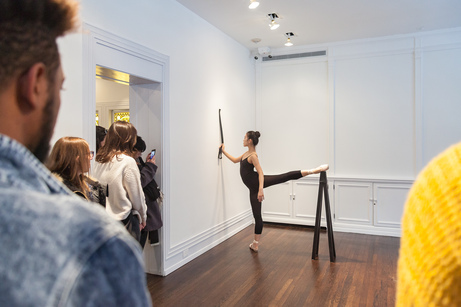
Please join us for the next performance related to our current exhibition, Brendan Fernandes: The Master and Form featuring dancers from the Joffrey Academy of Dance. The durational performance will activate the installation, designed in collaboration with Norman Kelley.
The Joffrey Academy of Dance, Official School of The Joffrey Ballet, is committed to providing students of all ages, levels and backgrounds who have a desire to dance with a world-class education built on a foundation of classical ballet. With the talents cultivated at the Joffrey Academy, students can pursue careers as professional dancers at companies throughout the world, higher education opportunities in dance, or success in other fields. Through the Joffrey Academy’s programs, students develop a diverse set of skills including artistry, creativity, discipline and confidence, among others. The Joffrey Academy’s high-quality, educational programming forms future audiences and support for the Joffrey and builds the organization’s reputation worldwide.
Image: View of "Brendan Fernandes: The Master and Form." 2018, Graham Foundation, Chicago. Installation in collaboration with Norman Kelley; dancers: Satoru Iwasaki, Yuha Kamoto, Andrea de León Rivera, Antonio Mannino, Leah Upchurch; photo: RCH
For more information on the exhibition, Brendan Fernandes: The Master and Form Installation in collaboration with Norman Kelley, click here.
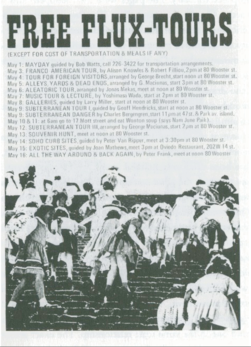
Please join us for a series of ambulatory performances to launch Lori Waxman's new Graham-funded book Keep Walking Intently: The Ambulatory Art of the Surrealists, the Situationist International, and Fluxus, just out from Sternberg Press, Berlin. Throughout the evening works by Vito Acconci, William Anastasi, La Monte Young, Anna Halprin, Daniel Buren, Irena Haiduk, and George Brecht, among others, will be performed.
Performers include Aram Atamian, Jane Thompson, Udita Upadhyaya, Phoebe Chin, Sophie Leddick, Mie Frederikke Fischer Christensen, Calla Dobmeyer, Maryam Faridani, Jordan Miller, Jose Perez, Solomon Salim Moore, Yewen Dong, Nanna Rosenfeldt-Olson and Lori Waxman.
Lori Waxman has been art critic for the Chicago Tribune for eight years. She teaches art history and criticism at the School of the Art Institute of Chicago and has a PhD from the Institute of Fine Arts, New York University. She is coauthor of Girls! Girls! Girls! in Contemporary Art (2011) and Talking with Your Mouth Full: New Language for Socially Engaged Art (2008). She received a Warhol Foundation Arts Writers Grant for her performance 60 wrd/min art critic, which was included in dOCUMENTA (13) and later published as an artist’s book by Onestar Press.
Image:“Free Flux-Tours,” poster, designed by George Maciunas, 1976.
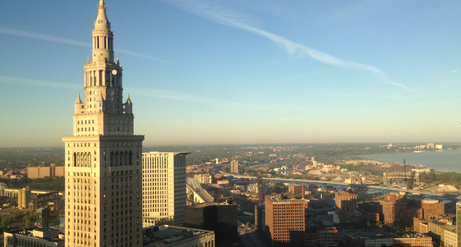
Join us for an evening with Graham grantee FRONT International: Cleveland Triennial for Contemporary Art in anticipation of its inaugural edition, An American City, taking place throughout the summer of 2018 with new work by over 60 artists, six major exhibitions, and site-specific installations around the city of Cleveland and Northeast Ohio.
Artistic Director Michelle Grabner will be in conversation with FRONT participating artists John Riepenhoff, Jennifer Reeder, Anne Wilson, Tony Tasset and Nate Young to discuss how artist projects are shaped within the triennial structure in addition to the ever-changing, politically urgent conditions of An American City.
Michelle Grabner is a celebrated American painter and conceptual artist. Her work has been featured in notable national and international collections. Grabner co-curated the 2015 Whitney Biennial and recently curated the Portland 2016 Biennial. Grabner is the Crown Family Professor of Painting and Drawing at the School of the Art Institute of Chicago. With her husband, Brad Killam, she co-directs the the Suburban in Milwaukee and the Poor Farm in Little Wolf, Wisconsin.
Related Graham Foundation supported projects:
2017 Publication Grant to FRONT Exhibition Company for An American City: Exhibition Catalogue and Guide

THE SEEN and EXPO CHICAGO, in collaboration with the Graham Foundation, present the Chicago Art Critics Forum. Now in its seventh edition, Salon Review convenes a live panel of contemporary critics to discuss exhibitions currently on display in Chicago. Centered around the materiality of experience, Howardena Pindell’s retrospective at the Museum of Contemporary Art Chicago, Mounira Al Solh’s work at the Art Institute of Chicago, the experimental paintings of Sam Gilliam, Alan Shields, and Frank Stella at the Block Museum of Art's Katz Gallery, and the group exhibition Unthought Environments at the Renaissance Society will be discussed.
Panelists include Elliot Reichert (Newcity), Abigail Winograd (Artforum.com), and Ruslana Lichtzier (THE SEEN). Hosted by Stephanie Cristello, Editor-in-Chief of THE SEEN.
RSVP to [email protected]
THE SEEN, Chicago’s International Journal of Contemporary & Modern Art, features in-depth writing on exhibitions, as well as highlight essays, artist profiles, and reviews. Publishing twice a year in print, in addition to monthly online issues, the free, full-color, 150+ page journal is produced in a limited-edition 10,000-count run, and is available for distribution at multiple public locations throughout the city of Chicago, as well as select national and international distribution.
With a network of Staff Writers reporting from around the world, THE SEEN features exclusive pieces and new commissions on the best in international contemporary art. THE SEEN is published by EXPO CHICAGO and led by Editor-in-Chief, Stephanie Cristello. Issue 06 will launch in print April 2018, with exclusive pieces and new commissions on the best in international contemporary art, featuring Brendan Fernandes on the cover to align with his recent exhibition, The Master and Form, at the Graham Foundation.
Free copies of Issues 04 and 05 of THE SEEN will be available for distribution.
Image: Howardena Pindell, Video Drawings: Swimming, 1975. Chromogenic development print; framed: 13 15/16 × 16 1/16 in. (35.4 × 40.8 cm). Collection Museum of Contemporary Art Chicago, Anixter Art Acquisition Fund, 2016.6. Courtesy the artist and Garth Greenan Gallery, New York.
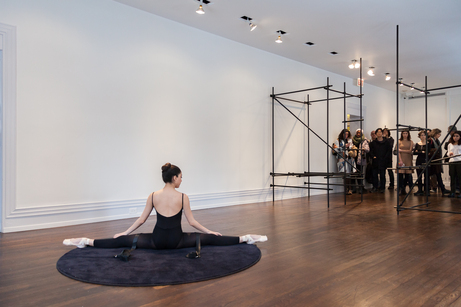
Please join us for the final performance related to our current exhibition, Brendan Fernandes: The Master and Form featuring dancers from the Joffrey Academy of Dance. The durational performance will activate the installation, designed in collaboration with Norman Kelley.
The Joffrey Academy of Dance, Official School of The Joffrey Ballet, is committed to providing students of all ages, levels and backgrounds who have a desire to dance with a world-class education built on a foundation of classical ballet. With the talents cultivated at the Joffrey Academy, students can pursue careers as professional dancers at companies throughout the world, higher education opportunities in dance, or success in other fields. Through the Joffrey Academy’s programs, students develop a diverse set of skills including artistry, creativity, discipline and confidence, among others. The Joffrey Academy’s high-quality, educational programming forms future audiences and support for the Joffrey and builds the organization’s reputation worldwide.
Image: View of "Brendan Fernandes: The Master and Form." 2018, Graham Foundation, Chicago. Installation in collaboration with Norman Kelley; dancers: Satoru Iwasaki, Yuha Kamoto, Andrea de León Rivera, Antonio Mannino, Leah Upchurch; photo: RCH
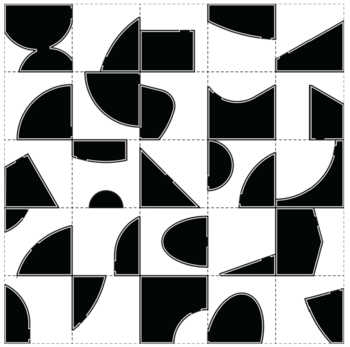
Renewed Archetypes, Endless Enclosure, Mystical Grid, Transient Monument, Inhabitable Wall, Dysfunctional Plan
Join us for a talk by Fosco Lucarelli, the 2017–18 Douglas A. Garofalo Fellow from the University of Illinois at Chicago (UIC) School of Architecture.
Dysfunctional Plans is a theoretical inquiry based on seven design exercises made in collaboration with a group of Lucarelli’s students. The project’s unwieldy brief provides no a priori function, content, strategy, site, or hypothetical condition apart from the arbitrary definition of seven oxymoronic images.
More an experiment than a manifesto, this talk and accompanying exhibition at UIC questions whether architecture might be a discipline autonomous enough to create its own narrative, content, function, purpose, and imagination—and therefore, meaning—stemming solely from its bare form.
Fosco Lucarelli is an Italian architect and educator based in Paris. He holds a Bachelor and Master of Architecture from the School of Architecture of Rome (Roma Tre) and from the ETSAM in Madrid. With his partner Mariabruna Fabrizi, he co-founded the architectural practice Microcities, and conducts independent research through the website SOCKS. He has taught at the École d'architecture de la ville et des territoires in Marne-La-Vallée in Paris, and at the École Polytechnique Fédérale in Lausanne. Together with M. Fabrizi, Lucarelli was the content-curator for "The Form of Form", the main exhibition at the 2016 Lisbon Architecture Triennale, and he is part of the chief curatorial team for the 2019 Lisbon Triennale.
About the Douglas A. Garofalo Fellowship
Named in honor of architect and educator Doug Garofalo (1958–2011), this nine-month teaching fellowship—supported with a grant from the Graham Foundation—provides emerging designers the opportunity to teach studio and seminar courses in the undergraduate and graduate programs and conduct independent design research. The fellowship also includes a public lecture at the Graham Foundation and an exhibition at the UIC School of Architecture. To learn more about the fellowship, click here.
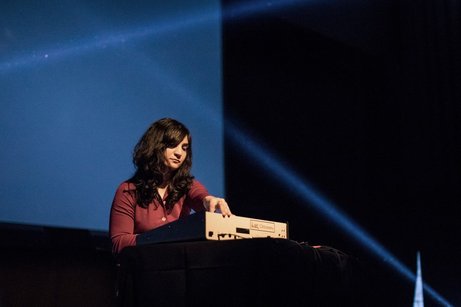
Canadian composer Sarah Davachi returns to Chicago and presents new work for reed organ, violin, viola da gamba and electronics. Based upon variously displaced melodic movements that were originally developed through a series of improvisations for pipe organ, this piece attempts to balance instances of consonance and dissonance, both in frequency content and physical gesture between its three players.
Joining Davachi in this performance are Chicagoans Whitney Johnson on violin and Phillip Serna on viola da gamba.
Sarah Davachi (b.1987, Calgary, Canada) is a composer of electronic and electroacoustic music. Trained at Mills College, she is engaged in practices of analog synthesis, psychoacoustic manipulations, multi-channel sound diffusion, and studio composition. Her compositional projects are primarily concerned with disclosing the antiquated instruments and forgotten sonics of a bygone era in synthesis, with concurrent treatment of acoustic sources—particularly organs, strings and woodwinds. Since 2007, she also has worked for the National Music Centre in Canada as a researcher and archivist of their collection of acoustic and electronic keyboard instruments. She has held artist residencies at the Banff Centre for Arts; EMS, Stockholm; OBORO, Montreal; and STEIM, Amsterdam. Davachi currently lives in Los Angeles, where she is a doctoral student in musicology.
Since 2010 the Graham Foundation has supported and partnered with Lampo to produce this performance series held at the Madlener House. Lampo, founded in 1997, is a non-profit organization for experimental music and intermedia projects.

Torkwase Dyson, “Looking for the People (Water Table Ocular #3),” 2017. Polymer gravure on Hahnmuhle Copperplate White paper. Published by Brodsky Center. Collaborating Master Printer Randy Hemminghaus. Photograph courtesy of Brodsky Center. Copyright Torkwase Dyson and Brodsky Center. Photo by Peter Jacobs
Please join us for a reception with artist Torkwase Dyson as we celebrate the opening of her new installation.
Torkwase Dyson, born in Chicago, is an artist based in New York whose practice draws on her interest in abstraction, social architecture, and environmental justice. She began engaging social architecture through her project Studio South Zero (2014–ongoing), a mobile studio that relies on solar power and supports multidisciplinary artmaking. Recent solo exhibitions of Dyson’s work have been presented at the Drawing Center, New York City; Landmark Gallery, Texas Tech University, Lubbock; Eyebeam, Brooklyn; and the Meat Market Gallery, Washington, DC. Her work has also been included in exhibitions in New York at the Whitney Museum of American Art; the Studio Museum in Harlem; Martos Gallery; Postmasters Gallery; and We Buy Gold, Brooklyn as well as at the Schuylkill Center for Environmental Education, Philadelphia, and the National Museum of African Art, Washington DC. Dyson’s work has been supported by the Joan Mitchell Foundation; Nancy Graves Foundation; Nicholas School of the Environment, Duke University; and the Lower Manhattan Cultural Center. She is on the board of the Architectural League of New York and is a visiting critic at the Yale University School of Art. She is represented by Davidson Contemporary, New York; and Rhona Hoffman Gallery, Chicago.
For more information on the exhibition, Wynter-Wells School, click here.

This symposium will bring together a roster of international scholars to examine challenges and opportunities presented by the comparative study of cities across the globe from the sixteenth century to the present. The opening panel discussion at the Graham Foundation will feature Reinhold Martin, Nancy Steinhardt, and Kenny Cupers.
Reinhold Martin is Professor of Architecture at the Graduate School of Architecture, Planning, and Preservation at Columbia University and Director of the Temple Hoyne Buell Center for the Study of American Architecture.
Nancy Steinhardt is Chair of the Department of East Asian Languages and Cultures at the University of Pennsylvania and Professor of East Asian Art in Penn’s History of Art Department.
Kenny Cupers is Head of Urban Studies and Professor of History and Theory of Architecture at the University of Basel, Switzerland.
Ayala Levin, Assistant Professor in the Department of Art History at Northwestern University, will moderate the panel.
The symposium continues on May 18 at the Northwestern University Library in Evanston. The event at Northwestern is free but separate registration is required. To register for the full symposium, click here.
Image: Left: Vassallieu dit Nicolay, Map of Paris, 1609. Bibliothèque national de France, Paris; right: Aerial view of Chicago. Jesús Escobar
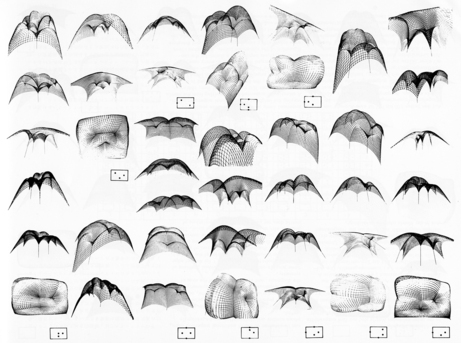
Join us for a talk by Sean Keller to launch his new Graham-funded book Automatic Architecture: Motivating Form after Modernism recently published by University of Chicago Press.
Automatic Architecture examines architects’ enthusiasm for autonomic design methods in the 1960s and 1970s. Influenced by the new science of computing, these architects tried to replace individual intuition with methods that were thought to be objective, logical, or natural. The book closes with an analysis of our contemporary condition, suggesting paths for architectural practice that work through, but also beyond, the merely automatic.
Sean Keller is a historian and critic of modern and contemporary architecture. His writing has been recognized by a Winterhouse Award for Design Writing and Criticism and by a Warhol Foundation Grant. He is the author of Automatic Architecture: Motivating Form After Modernism (University of Chicago Press, 2018); and is currently completing a book on the art and architecture of the 1972 Munich Olympics (forthcoming, with Christine Mehring, Yale University Press).
Keller is Associate Professor, Associate Dean of Research, and Director of the MS program at the IIT College of Architecture. He has taught at the University of Chicago, Yale University, and Harvard University. He is a Fellow of the Neubauer Collegium and formerly a Residential Scholar of the Franke Institute for the Humanities, both at the University of Chicago. He is a trustee of the Graham Foundation.
Image: Grid-shell forms determined by hanging chain nets, the Institute for Lightweight Structures, Stuttgart, 1974. Courtesy of ILEK, University of Stuttgart.
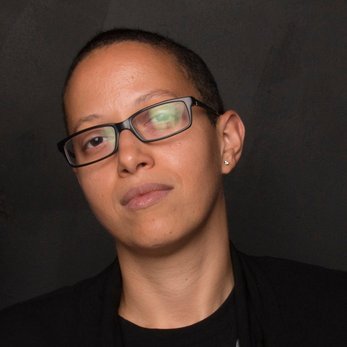
Urban designer and professor of architecture, Mitch McEwen presents an original lecture responding directly to the exhibition Torkwase Dyson and the Wynter-Wells School. Building on ongoing discussions with Dyson, McEwen examines experimentation, design, and how transformative events, such as climate change, can incite change in architecture and urban studies. Components of this commissioned lecture and elements of the intellectual partnership between McEwen and Dyson will be presented as part of the Graham-published book that accompanies Dyson’s exhibition and fellowship.
V. Mitch McEwen is principal of McEwen Studio and co-founder of A(n) Office, a collaborative of design studios in Detroit and New York City. McEwen’s work has been awarded grants from the Graham Foundation, Knight Foundation, and New York State Council on the Arts. A(n) Office and McEwen Studio projects have been commissioned by the US Pavilion at the Venice Architecture Biennale, the Museum of Contemporary Art Detroit, and the Istanbul Design Biennial. McEwen’s work in urban design and architecture began at Bernard Tschumi Architects and the New York City Department of City Planning, as well as founding the Brooklyn-based non-profit SUPERFRONT. McEwen earned her MArch at Columbia University and BA at Harvard College cum laude in Social Studies. Since 2017 she has been Assistant Professor at Princeton School of Architecture, after teaching previously at University of Michigan and Columbia Graduate School of Architecture, Planning and Preservation. Since 2017, McEwen serves as a Board Member of the Van Alen Institute in New York City.
This talk is presented in conjunction with our current exhibition Torkwase Dyson and the Wynter-Wells School.
For more information on the exhibition, Wynter-Wells School, click here.
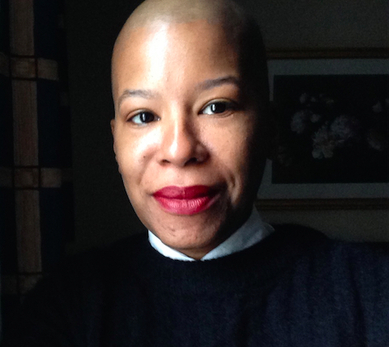
Join us for an evening of discussion with scholar Christina Sharpe and artist Torkwase Dyson. First introduced through the Center for African American Poetry & Poetics at the University of Pittsburgh’s program, Unruly Collaborations, Sharpe and Dyson continue their conversation at the Graham Foundation. Both share interests in tackling meaningful and ethically responsible ways to wrestle with the many challenging issues of contemporary society, including those influenced by post-civil rights and postcolonial landscapes.
Christina Sharpe is Professor of English, Africana, and Women’s, Gender, and Sexuality Studies at Tufts University. In July she will join the faculty of York University in Toronto as Professor in the Department of Humanities. Her second book, In the Wake: On Blackness and Being, was published by Duke University Press in November 2016 and was named in the Guardian newspaper and The Walrus as one of the best books of 2016. In the Wake was also chosen as a finalist in the category of nonfiction for the Hurston/Wright Legacy Awards. Her first book, Monstrous Intimacies: Making Post-Slavery, Subjects was published in 2010, also by Duke University Press. She is currently completing the critical introduction to the Collected Poems of Dionne Brand (1982–2010) to be published by Duke University Press. She is also working on a monograph: Black. Still. Life. She has recently contributed essays to the book accompanying Arthur Jafa’s first solo exhibition Love is the Message, The Message is Death and an essay called “The Crook of Her Arm” for a collection on the work of the artist Martine Syms.
This talk is presented in conjunction with our current exhibition Torkwase Dyson and the Wynter-Wells School.
For more information on the exhibition, Wynter-Wells School, click here.
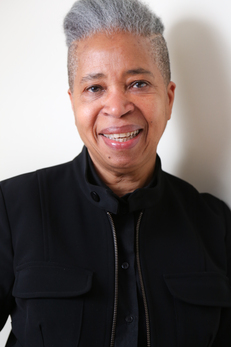
Photo: Jason Chow
The poet Dionne Brand delivers a talk and shares selections from her forthcoming book, The Blue Clerk (Duke). Brand’s presentation—commissioned by the Graham Foundation in partnership with the Poetry Foundation—weaves narratives between Brand and the artist Torkwase Dyson as both address the language of shapes. Selections of this talk will be included in the Wynter-Wells School publication that will be published at the conclusion of the exhibition at the Madlener House.
Dionne Brand is a Canadian poet. Born in Trinidad, Brand attended the University of Toronto earning degrees in Philosophy and English and a Masters in the Philosophy of Education. Her books of poetry include No Language Is Neutral, a finalist for the Governor General’s Award; Land to Light On, winner of the Governor General’s Award and the Trillium Award; and thirsty, finalist for the Griffin Prize and winner of the Pat Lowther Award for poetry. Brand is also the author of the acclaimed novels In Another Place, Not Here, which was shortlisted for the Chapters/Books in Canada First Novel Award and the Trillium Award, and At the Full and Change of the Moon. Her works of non-fiction include Bread Out of Stone and A Map to the Door of No Return. In addition to her literary accomplishments, Brand is Professor of English in the School of English and Theatre Studies at the University of Guelph.
The Poetry Foundation, publisher of Poetry magazine, is an independent literary organization committed to a vigorous presence for poetry in our culture. It exists to discover and celebrate the best poetry and to place it before the largest possible audience.
For more information on the exhibition, Wynter-Wells School, click here.

Join us for a new performance by Graham Lambkin and Joe McPhee. In 1993 one of the chief concerns of Graham Lambkin’s then fledgling group Shadow Ring was to emulate, on a cheap Casio keyboard, the electronic textures of ’70s Joe McPhee collaborator John Snyder’s ARP synthesizer. Twenty-two years later Lambkin and McPhee recorded their Chance Meeting album using chimes, whistle, pocket synthesizer, tape, Baoding balls and other objects. The recording is marked by the jovial spirit and wry humor that characterizes their collaborative dynamic, both in performance and friendship.
Graham Lambkin (b.1973, Dover, England) is a multidisciplinary artist who first came to prominence in the early 90s through the formation of his experimental music group The Shadow Ring. A sound organizer rather than music maker, Lambkin looks at an everyday object and sees an ocean of possibility, continually transforming quotidian atmospheres and the mundane into expressive sound art using tape manipulation techniques, chance operations and the thick ambience of domestic field recordings.
Joe McPhee (b.1939, Miami, Fla.) has been a deeply emotional composer, improviser and multi-instrumentalist since his emergence on the creative jazz and new music scenes in the late 60s. Inspired by the music of Albert Ayler, he taught himself the saxophone and proceeded to cut two records that remain defining monuments to the civil rights era: the out free jazz of Underground Railroad and avant-funk of Nation Time. His odyssey since has taken McPhee through Deep Listening collaborations with Pauline Oliveros and countless left field improv sessions both within and way outside of the jazz tradition.
Since 2010 the Graham Foundation has supported and partnered with Lampo to produce this performance series held at the Madlener House. Lampo, founded in 1997, is a non-profit organization for experimental music and intermedia projects.
Image: Courtesy Steve Louie
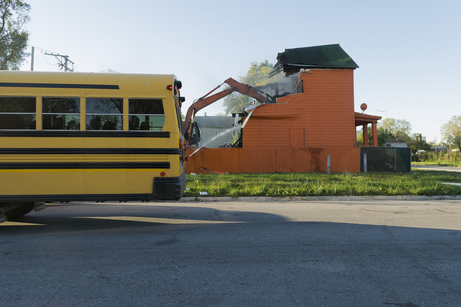
Workshop: 9 a.m.-12 p.m., limited capacity
This workshop asks participants to consider points of entry into urgent questions, such as what is global warming? What is climate change? How are they different and what do they have to do with uneven development and geography? This open discussion addresses these questions through drawing as they relate to time, motion, and transparency, as well as the distribution of energy and resources.
Through cross-disciplinary collaboration, drawing exercises, and discussion, this workshop led by Torkwase Dyson in partnership with Amanda Williams asks participants to reconsider “the things the mind already knows,” a principle Dyson borrows from the artist Jasper Johns regarding innovation in approaching familiar objects or concepts.
Intimate afternoon workshop sessions will be followed by public evening presentations. No artistic experience is required for the workshops, though willingness to participate in both the discussions and artistic exercises is expected. Any specific instructions related to the workshop will be sent following confirmation of attendance. All workshops are free, but RSVP is required and space is limited.
Amanda Williams is a visual artist who trained as an architect. Her practice blurs the distinction between art and architecture through works that employ color as a way to draw attention to the political complexities of race, place, and value in cities. The landscapes in which she operates are the visual residue of the invisible policies and forces that have misshapen most inner cities. Williams’ installations, paintings, video, and works on paper seek to inspire new ways of looking at the familiar, and in the process, raise questions about the state of urban space in America. Amanda has exhibited widely, including the 2018 Venice Architecture Biennale, a solo exhibition at the Museum of Contemporary Art Chicago, The Art Institute of Chicago, and the Pulitzer Arts Foundation in St. Louis. She is a 2018 United States Artists Fellow, a Joan Mitchell Foundation Painters & Sculptors grantee, an Efroymson Family Arts Fellow, a Leadership Greater Chicago Fellow, and a member of the multidisciplinary Exhibition Design team for the Obama Presidential Center. She has served as a Visiting Assistant Professor of Architecture at Cornell University and Washington University in St. Louis. She lives and works on Chicago’s south side.
Image: Color(ed) Theory Series: Flamin' Red Hots (Demolition Bus), 2018. Image courtesy of the Artist and Rhona Hoffman Gallery.
For more information on the exhibition, Wynter-Wells School, click here.

Workshop: 1–4 p.m., sold out
Performance and Panel Discussion: 6 p.m.
At a time when mass migration due to the effects of climate change has become a critical concern, artist, and designer Andres L. Hernandez, and artist and dancer Zachary Fabri ask how drawing can can be used as an interpretative act of movement to address pressing global issues.
Workshop
Through cross-disciplinary collaboration, drawing exercises, and discussion, this workshop led by Torkwase Dyson in partnership with Andres Luis Hernandez and Zachary Fabri asks participants to reconsider “the things the mind already knows,” a principle Dyson borrows from the artist Jasper Johns regarding innovation in approaching familiar objects or concepts.
No artistic experience is required for the workshop, though willingness to participate in both the discussions and artistic exercises is expected. All workshops are free, but RSVP is required and space is limited.
Performance and Panel Discussion
After the workshop, Hernandez and Fabri will present a new collaborative performance, followed by a panel discussion with Torkwase Dyson and D Soyini Madison.
Andres Luis Hernandez is an artist and educator committed to collaborative and community-based work, currently working on a range of projects with the Museum of Contemporary Art Chicago and the Chicago Department of Cultural Affairs. His work explores ways that private and public spaces are used to promote and sustain injustice, often taking the form of archival research, writing, public programming, participatory workshops, ephemeral interventions, and performances within the built environment. Hernandez received his Bachelor of Architecture degree from Cornell University and an MA in art education from the School of the Art Institute of Chicago, where he is an assistant professor in the Department of Art Education.
Zachary Fabri is an artist working in video, photography and drawing. He has been awarded The Louis Comfort Tiffany Foundation Award, the Franklin Furnace Fund for Performance Art and the New York Foundation for the Arts fellowship in interdisciplinary work. Fabri’s work has been exhibited at Art in General, The Studio Museum in Harlem, El Museo del Barrio, The Walker Art Center, The Brooklyn Museum, The Barnes Foundation, Rockelmann & gallery, and Third Streaming. He has collaborated in multidisciplinary projects with choreographer Joanna Kotze at the Baryshnikov Arts Center, and most recently with artist Torkwase Dyson at the Drawing Center in 2018. Currently, he is making drawings on napkins he stole from the Trump Soho Hotel while working as a bus boy. Fabri lives and works in Flatbush Brooklyn.
D. Soyini Madison is professor of Performance Studies, with appointments in the Department of African American Studies and the Department of Anthropology at Northwestern University. Madison has lived and worked in Ghana, as a Senior Fulbright Scholar conducting field research on the interconnections between traditional religion, political economy, and indigenous performance tactics.
Image: Andres L. Hernandez, Untitled (Study for "JRRNYYMNN" in Hammons blue), 2018. Digital edit of photocopy on paper, dimensions variable
For more information on the exhibition, Wynter-Wells School, click here.
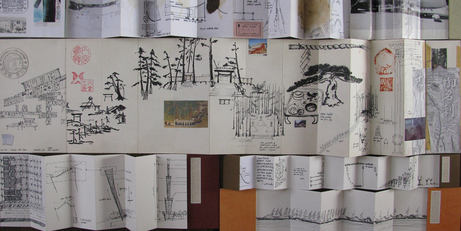
Workshop: 1–5 p.m., sold out
Talk: 6 p.m.
What types of energy are available to us and why should we diversify and use less? This intimate afternoon workshop session will be followed by a public evening presentation investigating diverse sources of energy and their site-specific pros and cons.
Led by landscape architect Ron Henderson and artist Torkwase Dyson, the workshop considers hydroelectric power and the gravitational potential of energy as a way to examine state changes in matter and liquid. Participants use the fundamental logic of elevation drawing to think through the science of water and the way in which it shapes space.
Ron Henderson is professor and director of the graduate program in landscape architecture and urbanism at Illinois Institute of Technology in Chicago. He is also founding principal of L+A Landscape Architecture, which has received many international, national, and regional awards, including nominations in 2013 and 2017 for the European Union Urban Prize. He is Fellow of the American Society of Landscape Architects, a Creative Artist Fellow at the US–Japan Friendship Commission, Senior Fellow of Garden and Landscape Studies at Dumbarton Oaks, and author of The Gardens of Suzhou, published by the University of Pennsylvania Press. He received a Graham Foundation grant in 2018 for the program series, "Alfred Caldwell and the Performance of Democracy.”
Image: Excerpt from Henderson's orihon, or folding sketchbooks, include an investigation of water sequences at Ise Shrine in Japan
For more information on the exhibition, Wynter-Wells School, click here.
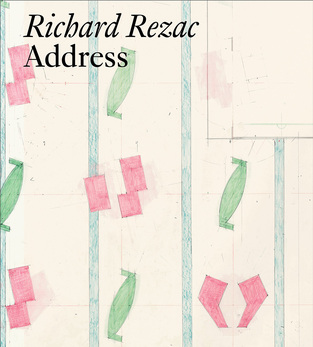
Please join us to celebrate the launch of Richard Rezac: Address, a new publication documenting and expanding on the artist’s recent Renaissance Society exhibition, supported by a grant from the Graham Foundation. The catalogue features a generous selection of images, a conversation between the artist and curator Solveig Øvstebø, and new texts by Jennifer R. Gross, James Rondeau, and Matthew Goulish. Hosted in partnership with the Renaissance Society, this evening features a reading by Matthew Goulish.
Related Graham Foundation supported projects:
2017 Exhibition Grant to The Renaissance Society at the University of Chicago for Richard Rezac: Address
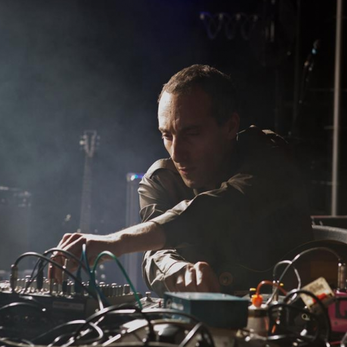
Please note: this event begins at 9 p.m.
Australian composer and multi-instrumentalist, Oren Ambarchi plays the inaugural American performance of “Sbagliato”for two guitars in the first concert of the 2018-19 Lampo series.
He has performed and recorded with a diverse array of artists such as Fennesz, Charlemagne Palestine, Sunn 0)), Thomas Brinkmann, Alvin Lucier, John Zorn, Manuel Gottsching/Ash Ra, Merzbow, Keith Rowe, Akio Suzuki, Phill Niblock, John Tilbury, Richard Pinhas, Evan Parker, Crys Cole, Fire!, and many more. His acclaimed trio with Keiji Haino and Jim O’Rourke performs in Tokyo annually with many of their concerts documented on Ambarchi’s Black Truffle label. Ambarchi has released numerous recordings for labels such as Touch, Editions Mego, Drag City, PAN, Southern Lord, Kranky and Tzadik. In April 2014 Oren Ambarchi performed the first solo version of “Knots” for Lampo. His latest solo release is “Hubris” (2016) and features an astonishing cast of players including Crys Cole, Mark Fell, Arto Lindsay, Jim O’Rourke, Keith Fullerton Whitman, and Ricardo Villalobos amongst others.
Oren Ambarchi (b.1969, Sydney, Australia) is an artist with longstanding interests in transcending conventional instrumental approaches. His work focuses mainly on the exploration of the guitar. Ambarchi’s works are hesitant, tense, and extended song-forms, located in the cracks between several approaches: modern electronics and processing; laminal improvisation and minimalism; hushed, pensive songwriting; the deceptive simplicity and temporal suspensions of composers such as Morton Feldman and Alvin Lucier; and the physicality of rock music, slowed down and stripped back to its bare bones, abstracted and replaced with pure signal.
Since 2010 the Graham Foundation has supported and partnered with Lampo to produce this performance series held at the Madlener House. Lampo, founded in 1997, is a non-profit organization for experimental music and intermedia projects.

Please join us for a reception with artist Martine Syms as we celebrate the opening of her new installation, Incense Sweaters & Ice.
The exhibition is presented through Martine Syms’ nomination as a 2018 Graham Foundation Fellow—a new program that provides support for the development and production of original and challenging works and the opportunity to present these projects in an exhibition at the Foundation’s Madlener House galleries in Chicago. The Fellowship program extends the legacy of the Foundation’s first awards, made in 1957, and continues the tradition of support to individuals to explore innovative perspectives on spatial practices in design culture. This presentation of Incense Sweaters & Ice follows the 2017 grant Syms was awarded to produce the film which was shown in the exhibition of the same name at The Museum of Modern Art, curated by Jocelyn Miller, as part of the Elaine Dannheisser Project Series.
Martine Syms works in video, performance, and publishing. She received her BFA from the School of the Art Institute of Chicago. Her work has been shown at the Museum of Modern Art, New York; Camden Arts Centre, London; Sadie Coles HQ, London; Hammer Museum, Los Angeles; the Berlin Biennale; Manifesta, Zurich; the ICA London; Bridget Donahue, New York; the Gene Siskel Film Center, Chicago; White Flag Projects, St. Louis; the Studio Museum in Harlem, New York; the Institute of Contemporary Art, Philadelphia; and the Museum of Contemporary Art, Chicago. Her work was featured in Surround Audience, the New Museum’s 2015 Triennial. From 2007 to 2011, Syms was codirector of Golden Age, a project space in Chicago focused on printed matter; she is also the founder of Dominica, an independent publishing company dedicated to exploring blackness as a topic, reference, marker, and audience in visual culture. Syms is represented by Bridget Donahue, New York; and Sadie Coles HQ, London.
Image: Martine Syms, Incense Sweaters & Ice (still), 2017, Los Angeles. Courtesy of the artist and Bridget Donahue, New York
For more information on the exhibition, Incense Sweaters & Ice, click here.
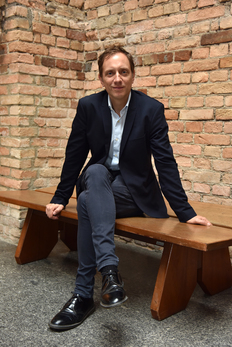
Introducing examples of his experience organizing projects at the Venice Biennial, the São Paulo Biennial, the Aichi Triennial, Inhotim or at Pinacoteca de São Paulo, Volz will speak about art experiments that set out to produce reality, promote diversity, exercise critical argument and open new ways of engaging the audience.
Jochen Volz is the Director of Pinacoteca de São Paulo and the curator of the Brazilian Pavilion at the 57th Biennale di Venezia (2017). He was the chief curator of the 32nd Bienal de São Paulo (2016). Between 2012 and 2015 he was Head of Programmes at the Serpentine Galleries in London. Prior, he was a curator at the Instituto Inhotim, Minas Gerais, since 2004, where he has served as General Director between 2005 and 2007 and Artistic Director between 2007 and 2012. Furthermore, he has contributed to many exhibitions throughout the world, including Terra Comunal–Marina Abramović in SESC, São Paulo (2015); Planos de fuga, Centro Cultural Banco do Brasil, São Paulo (2012); Olafur Eliasson – Your Body of Work, as part of the 17th International Festival of Contemporary Art, São Paulo (2011); and The Spiral and the Square at Bonniers Konsthall, Stockholm, at Gråmølna Kunstmuseum, Trondheim, and at Sørlandets Kunstmuseum, Kristiansand (2011), the 1st Aichi Triennale in Nagoya (2010) and the presentation of Cinthia Marcelle at the Biennale de Lyon (2007). As a critic he writes for magazines and catalogues and is a contributing editor to Frieze.
This event is presented as a part of the 2018 Curatorial Forum in collaboration with EXPO CHICAGO and Independent Curators International (ICI).
Image: Photo Christina Rufatto, courtesy Pinacoteca de São Paulo
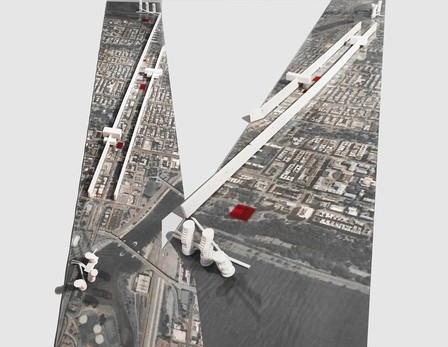
Architecture is a spatial performance that can engage space-making and the idea of liberation as a spatial practice—much as Michel Foucault said that liberty is a practice. In this talk, Gooden explores how relationships between architecture and performance liberate otherness and challenge the hegemony of Western thought and cultural imagination.
Mario Gooden is a cultural practice architect and sole principal of Huff + Gooden Architects. His practice engages the cultural landscape and the intersectionality of architecture, race, gender, sexuality, and technology. His work crosses the thresholds between the design of architecture and the built environment, writing, research, speaking, performance, and education advocacy in the pursuit of spatial and social justice. Gooden is also a Professor of Practice at the Graduate School of Architecture Planning and Preservation of Columbia University where he is a co-director of the Global Africa Lab (GAL). He teaches advanced architectural design and theory at Columbia University where his studios focus on performance and cultural theory relative to global topics. Gooden is the author of Dark Space: Architecture Representation Black Identity (Columbia University Press) published in 2016.
Image: Harlem Now: Architecture and Its Ghosts (model view), 2017. Courtesy Mario Gooden
For more information on the exhibition, Incense Sweaters & Ice, click here.
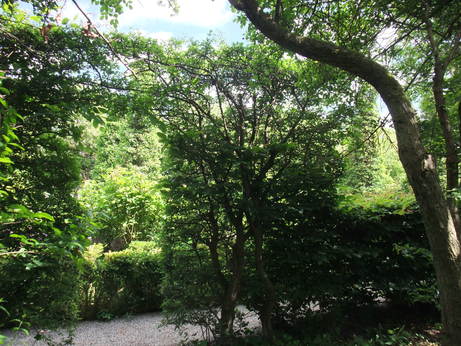
Landscape architecture has a fraught relationship with gardening, despite having developed from it via landscape gardening, as it has sought professionalization by becoming more architectural. Raxworthy argues that as landscape architecture has become more representational it has lost touch with maintenance tools in gardening that allow for the optimization of the properties of change that landscape materials like plants have, such as growth. Here, Raxworthy presents an overview of his latest book, Overgrown: Practice between Landscape Architecture and Gardening which was supported by a Graham Foundation grant in 2016 and published by MIT Press in 2018. The book advances a new model for plant form: "the viridic”—from the Latin for green, virent, and growth, viridesco—a landscape equivalent of the tectonic, which has been undertheorized in landscape architecture, and encourages the discipline to engage directly with the garden.
Julian Raxworthy, PhD, is an Australian landscape architect, and teaches in the Master of Landscape Architecture and Master of Urban Design programs at the University of Cape Town, South Africa. He was a recipient of a Graham Foundation for Advanced Study in the Fine Arts grant for his book Overgrown: Practices between Landscape Architecture and Gardening, published by The MIT Press in Fall 2018.
Image: Species from the family Araceae collected by Roberto Burle Marx highlighted around the lake at the Sitio Roberto Burle Marx, Brazil. Courtesy the author.

The Whole Earth Catalog (1968–1974), was a cultural touchstone of the 1960s and 70s. The iconic cover images of the Earth viewed from space made it one of the most recognizable volumes on bookstores shelves. The lecture will shed light on material aspects of the Catalog—its mode of production and behind-the-scenes debates- and to better understand the intentions of its protagonists.
Caroline Maniaque-Benton, PhD, is Professor of the History of Architecture and Design at the Ecole Nationale Supérieure d'Architecture Normandie, and part of the research laboratory Ipraus- Umr AUSser /University Paris Est. A past fellow of the Canadian Centre for Architecture and Center for Advanced Study in the Visual Arts (National Gallery of Art, Washington, DC), she is the author of Le Corbusier and the Maisons Jaoul (Princeton Architectural Press, 2009), French Encounters with the American Counterculture 1960–1980 (Ashgate, 2011), and the editor, with Meredith Gaglio, of the anthology entitled Whole Earth Field Guide (MIT Press, 2016). She is the co-curator of the exhibition Mai 68. L’architecture aussi!, Cité de l’architecture et du patrimoine, Paris, May-September 2018. She also is editing the book Les années 68 et la formation des architectes, Rouen, Point de vues, 2018.
This talk is presented in relationship to the 2012 publication grant to Caroline Maniaque-Benton for The Whole Earth Field Guide (MIT Press, 2016).
Image: Back cover image of a cutaway globe against a pink background showing the two Americas, filled with earthworms breaking through the surface. Paul Krassner and Ken Kesey (eds.), “The Realist Presents: The Last Supplement to the Whole Earth Catalog,” Realist 89 (New York: Realist Association, March 1971). Courtesy Stewart Brand and the Department of Special Collections and University Archives, Stanford University Libraries
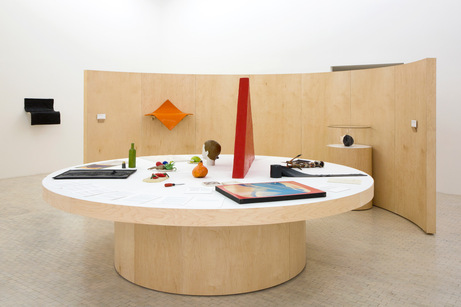
Join us for a talk by Manuel Raeder focusing on the work of his Berlin-based interdisciplinary design office, Studio Manuel Raeder and independent publishing house, BOM DIA BOA TARDE BOA NOITE. Concerned with the construction of narratives in the form of books, exhibitions, and communication design, the studio works closely with artists and designers to explore how books can be used as experimental devices to document or conceive of ideas, as well as how exhibition design can trigger different sensorial experiences through a spatial experience. Through his interests in the meaning of books in space, the archive, and the future of libraries, Raeder questions how different forms of organizing and categorizing can define or alter history.
Studio Manuel Raeder has collaborated on over 150 artist’s books and has been responsible for the communication strategies and graphic identities of several cultural institutions and galleries including Kölnischer Kunstverein (2007 – 2011), Kunstverein München (2010 – 2015), Para Site Hong Kong (2012 – 2014), Artists Space New York (since 2009), Galerie Neu Berlin (since 2005), Mendes Wood DM São Paulo/Brussels/New York (since 2014), kurimanzutto Mexico City (since 2016), as well as the fashion label BLESS (since 2004).
In 2011, Manuel Raeder founded the publishing house BOM DIA BOA TARDE BOA NOITE to distribute and publish artists who have a strong interest in exploring the format of the artist’s book. In doing so, the studio has developed longstanding collaborations with artists such as Daniel Steegmann Mangrané, Mariana Castillo Deball, Haegue Yang, Nora Schultz, Danh Vo, Heinz Peter Knes, Leonor Antunes, Abraham Cruzvillegas, Eran Schaerf, and Sergej Jensen, amongst others.
In collaboration with Elgarafi, the studio created a temporary shop in Berlin-Kreuzberg. Apart from offering Elgarafi prints, books published by BOM DIA and Muebles Manuel furniture, the space also hosts regular events.Specializing in high quality artist books that are conceived as an integral part of artists projects or as artworks themselves.
BOM DIA BOA TARDE BOA NOITE — ‘good day, good afternoon, good night’ in Portuguese — conveys the idea that books can become part of everyday life, regardless of the time of day.
Concurrent with this event, the Graham Foundation Bookshop will host a BOM DIA pop-up featuring a selection of recent titles.
Image: Exhibition Architecture by Studio Manuel Raeder for Eduardo Costa, Mental Relations, 2017 at Museo Tamayo, Mexico City, photo: Ramiro Chaves

In her Lampo debut, Madalyn Merkey premieres the performance of Digital Concert Creatures, a quadraphonic work for synthetic computer sounds and voice. Here, she sets autonomous sonic characters, or “creatures,” in motion, building sound by layering frequencies. “The main idea is that each letter on the keyboard has a different personality defined by four columns of numbers on the computer screen,” she writes. “Each keystroke catches a snapshot of the ‘creature’ as it moves along a compositional path, which then becomes complicated or influenced by the other keys being pressed.” Through a mix of control and chaos—and informed by mathematics more than traditional musicianship—Merkey’s new work is as playful as it is dense.
Since 2010 the Graham Foundation has supported and partnered with Lampo to produce this performance series held at the Madlener House. Lampo, founded in 1997, is a non-profit organization for experimental music and intermedia projects.
Madalyn Merkey (b.1988, Oklahoma City, Okla.) is a composer and performer of live computer music based in Oakland, California. Her practice began as a visual artist at the School of the Art Institute of Chicago, where she transitioned to sound and time-based art in 2010. Her recent work is concerned with using principles of logic to create computer programs that generate distinct sound surprises in a live setting. Merkey is also the English translator of Due scuole di musica elettronica in Italia, a pioneering electronic music text written by Enore Zaffiri in the 1960s. Her translation, Two Schools of Electronic Music, is forthcoming from Die Schachtel. Recordings of Merkey’s work Scent (2012) and Valley Girl (2014) are available on New Images Ltd.
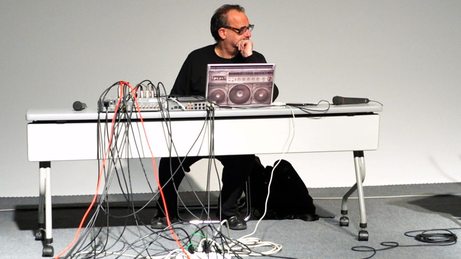
Computer music pioneer Carl Stone performs unreleased recent works, including Don Dae Gam and Sun Nong Dan, named after favorite restaurants, in this special concert for Lampo. Stone studied with Morton Subotnick and James Tenney at CalArts during the early 1970s, and, while still a student, began using appropriated material to generate work. His exploratory techniques led to a body of complex sound collages, widely credited for laying the groundwork for the entire sampling movement, and defining the arc of his singular practice over the decades since. He has proven a prolific and imaginative voice in electronic composition, mashing together notions of high and low culture and recontextualizing diverse ethnographic materials, from Purcell to Spears, into immensely beautiful, time-bending music.
Stone will also present an artist talk at the Lampo Annex on Friday, November 30, click here for more information and to RSVP.
Since 2010 the Graham Foundation has supported and partnered with Lampo to produce this performance series held at the Madlener House. Lampo, founded in 1997, is a non-profit organization for experimental music and intermedia projects.
Carl Stone (b.1953, Los Angeles, Calif.) has composed electroacoustic music almost exclusively since 1972, and has used computers in live performance since 1986. He was among the vanguard of artists incorporating turntables, early digital samplers, and personal computers into live electronic music composition. An adopter of the Max programming language while it was still in its earliest development at the IRCAM research center, Stone continues to use it as his primary instrument, both solo and in collaboration with other improvisers. He is currently a faculty member at Chukyo University in Japan. Two retrospective volumes of his work, Electronic Music from the Seventies and Eighties (2016) and Electronic Music from the Eighties and Nineties (2018) are available from Unseen Worlds.
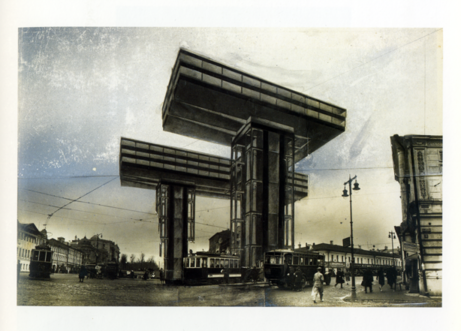
Montage has been hailed as one of the key structural principles of modernity, yet its importance to the history of modern architecture and urbanism has not been adequately explored. This presentation, derived from the recently-published Graham-funded book by the same title, introduces key concepts that chart the history of montage in late nineteenth-century urban and architectural contexts, its application by the early twentieth-century avant-garde, and its eventual appropriation in the postmodern period. Focusing on a specific case study, the talk demonstrates the centrality of montage in modern explorations of space and in conceiving and representing the contemporary city. After the talk join us for a reception celebrating the publication of Montage and the Metropolis: Architecture, Modernity, and the Representation of Space (Yale University Press, 2018).
Martino Stierli is The Philip Johnson Chief Curator of Architecture and Design at The Museum of Modern Art, a role he assumed in March 2015. Martino oversees the wide-ranging program of special exhibitions, installations, and acquisitions of the Department of Architecture and Design. His exhibition Toward a Concrete Utopia: Architecture in Yugoslavia, 1948–1980 is currently on view at MoMA. In 2016, he cocurated, with Ann Temkin, the exhibition From the Collection: 1960–1969.
Previously, he held a SNSF Professorship at the University of Zürich. Stierli is the author of Las Vegas in the Rearview Mirror: The City in Theory, Photography, and Film (Getty Research Institute, 2013) and coeditor of Participation in Art and Architecture (I. B. Tauris, 2016). He is the cocurator of the international traveling exhibition Las Vegas Studio: Images from the Archives of Robert Venturi and Denise Scott Brown. His scholarship has been recognized with a number of prizes and awards, among them the ETH Medal of Distinction and the Theodor Fischer Prize from the Zentralinstitut für Kunstgeschichte, Munich (2008). In 2012, he was a fellow at the Getty Research Institute in Los Angeles. He holds a PhD from ETH Zürich.
Image: El Lissitzky, Wolkenbügel, 1924-25. Photomontage. Courtesy of the Russian State Archive for Literature and Art, Moscow.
Unless otherwise noted,
all events take place at:
Madlener House4 West Burton Place, Chicago
The Graham Foundation galleries are currently closed to the public.
The bookshop is open by appointment only:
Wed–Fri, 12–5 p.m.
To make an appointment, email: [email protected]
CONTACT
312.787.4071
[email protected]
Accessibility
Events are held in the ballroom on the third floor which is only accessible by stairs.The first floor of the Madlener House is accessible via an outdoor lift. Please call 312.787.4071 to make arrangements.
Copyright © 2008–2025 Graham Foundation. All rights reserved.